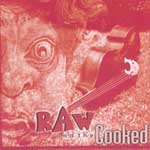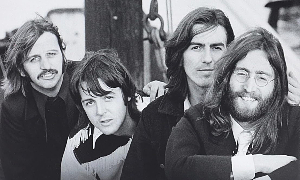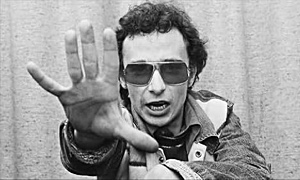Home » Jazz Articles » Book Review » Music And The Creative Spirit
Music And The Creative Spirit
 Music And The Creative Spirit
Music And The Creative SpiritLloyd Peterson
Scarecrow Press
ISBN 978-0-8108-5284-6
2006
At last, a book about music that doesn't impose any stylistic constraints—or, perhaps most importantly, any geographic ones. Lloyd Peterson, a contributor to Down Beat and Earshot magazines, adds the following subtitle to his new book: Innovators In Jazz, Improvisation And the Avant-Garde. While Peterson does use these three terms to categorize the 41 musicians interviewed in his book, it's really only because it would be impractical to do otherwise; after all, every book needs a punchy and descriptive title.
That said, the reality is that with interviews that span artists from guitarists Pat Metheny and Bill Frisell to Fred Frith, pianists Brad Mehldau and Marilyn Crispell to Myra Melford, and saxophonists Evan Parker and John Zorn to Fred Anderson, Peterson has created a book that tries to do the undoable: to articulate an art form that, in many ways, defies description. And by delving deep into the creative process, he's even more adventurous. How, after all, does one articulate inspiration? How does one articulate the subconscious flow of ideas that result in an aural form that speaks without words?
With multicultural, multinational representation, Music And The Creative Spirit tacitly makes a point that so many artists are trying to make today: that placing constraints on music inherently limits it. Placing labels on music inherently limits it. Placing artificial boundaries around music inherently limits it. Whether it's of a more extreme nature or not, whether its reference points are the roots of American jazz, the traditional folk forms of European countries or new music classicism, at the end of the day music is something that should be able to go wherever the imagination of the artist takes it.
Some of the artists represented are more articulate than others. Some are more optimistic than others. But what is evident throughout the book is the passion that every single participant brings to music making—whether it's in Fred Anderson's one page description of what music is or the late soprano saxophonist Steve Lacy's handwritten letter chastising Peterson for trying to quantify and qualify something that, to Lacy, was simply what he did.
Peterson is a solid interviewer, clearly going into each interview with a specific game plan, but flexible enough to let the subject take things where they may, resulting in some defining magical moments. Sometimes it's as simple as guitarist Bill Frisell explaining exactly what the concept of internalizing a melody is, or Fred Frith's terse but eminently practical explanation of his motivations. Peterson also knows more than enough about every artist he interviews to mine the interrelationships that exist—exploring what it is about each other, for example, that causes drummer Hamid Drake and bassist William Parker to work together on so many different projects.
Peterson clearly has certain areas he wants to explore, though the responses of his subjects cover a broad spectrum. A common subject that comes up in a number of interviews is a quote from Cecil Taylor: "Music has to do with a lot of areas which are magical rather than logical; the great artists, rather than just getting involved with discipline, get to understand love and allow the love to take shape."
Peterson then asks how much of the artist's music is from logic and how much from this other place that Cecil Taylor describes? Some, like trumpeter Dave Douglas, dispel the myth that creativity is something outside the experience of the average person; that creativity exists in everything we do. Others, like the late guitarist Derek Bailey, "shrink from that description," looking for the connectivity in the chaos. What makes the book work is that the different answers to the same question often add up to an understanding that transcends any individual response and, consequently, succeeds at getting closer to the heart of the matter.
Peterson also doesn't judge. While listeners often make assumptions about musicians operating in different spheres, experience proves that most musicians rarely pass similar judgements. Consequently it makes total sense that Peterson's book should include more "accessible" or "mainstream" artists like saxophonist Joshua Redman, bassist Christian McBride and guitarist Pat Martino alongside artists considered more on the outer edges like reedmen Peter Brotzmann, Ken Vandermark and Mats Gustafsson—three players who intersect on a regular basis.
The bond that ties the artists Peterson has chosen is their distinct musical personalities and questing spirits, regardless of how they apply it. While fans often find themselves judging who is more or less creative or forward-thinking, what Music And The Creative Spirit reveals is that most musicians simply don't think in those terms. Despite his crusty response, Steve Lacy may well have said it best: "Jazz is a language, a way of life, a glorious history... in the music I make I'm not trying to express anything, I don't believe I'm that important. I think the work (the music) is of far greater interest. Otherwise, it wouldn't be worth doing. Nobody asked us to play like this. We all have to struggle to make a living at it. We play what and how we want to play, and only that, during a lifetime."
Not everyone may be as direct or as confrontational as Lacy, but in Music And The Creative Spirit Peterson has created a wonderfully unbiased exploration of what it is to make music. Because it's a series of interviews it's a book that you can read in dribs and drabs; but by the time you've read the last interview (arranged alphabetically as there's no specifically intentioned, linear arc) you'll have a greater insight into what that process is. And, perhaps, a more open mind to check out areas to which you've yet to be exposed. For that alone Music And The Creative Spirit is a resounding success.
Tags
PREVIOUS / NEXT
Support All About Jazz
 All About Jazz has been a pillar of jazz since 1995, championing it as an art form and, more importantly, supporting the musicians who make it. Our enduring commitment has made "AAJ" one of the most culturally important websites of its kind, read by hundreds of thousands of fans, musicians and industry figures every month.
All About Jazz has been a pillar of jazz since 1995, championing it as an art form and, more importantly, supporting the musicians who make it. Our enduring commitment has made "AAJ" one of the most culturally important websites of its kind, read by hundreds of thousands of fans, musicians and industry figures every month.




























